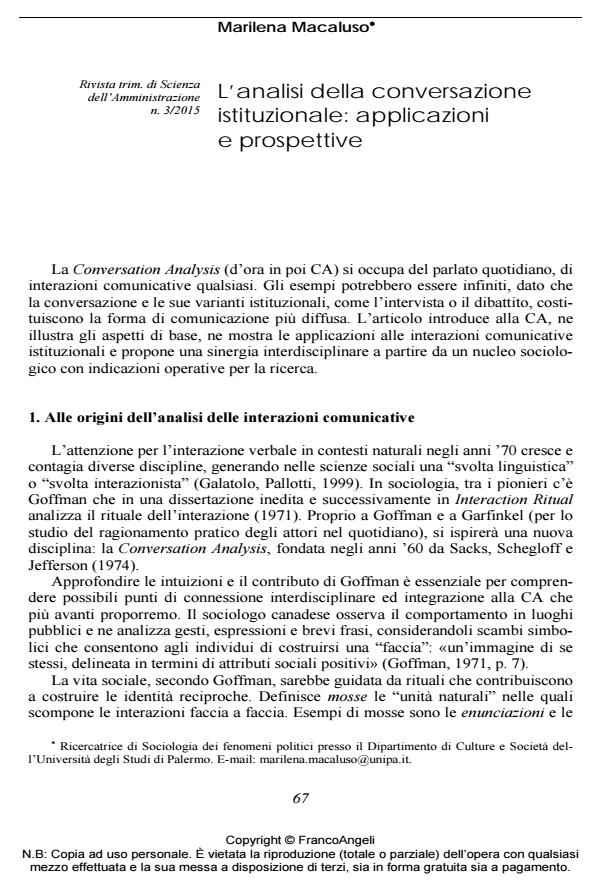Institutional Conversation Analysis: applications and perspectives
Journal title RIVISTA TRIMESTRALE DI SCIENZA DELL’AMMINISTRAZIONE
Author/s Marilena Macaluso
Publishing Year 2015 Issue 2015/3
Language Italian Pages 11 P. 67-77 File size 66 KB
DOI 10.3280/SA2015-003005
DOI is like a bar code for intellectual property: to have more infomation
click here
Below, you can see the article first page
If you want to buy this article in PDF format, you can do it, following the instructions to buy download credits

FrancoAngeli is member of Publishers International Linking Association, Inc (PILA), a not-for-profit association which run the CrossRef service enabling links to and from online scholarly content.
Conversation Analysis deals with daily talk, with usual communicative interactions, between friends or strangers, between customer and salesman, teacher and students, therapist and patient. Its applications may be unlimited, since talk and its "institutional" variants, as the interview or the debate, represent the most immediate and widespread forms of communication. In the article the author introduces Conversation Analysis by illustrating the basic issues and showing the applications to institutional communicative interactions. She also proposes an interdisciplinary synergy starting from a sociological core, offering some short recommendations and perspectives for empirical research.
Keywords: Conversation Analysis - Institutional talk - methodology and administrative sociology - public communication
Marilena Macaluso, L’analisi della conversazione istituzionale: applicazioni e prospettive in "RIVISTA TRIMESTRALE DI SCIENZA DELL’AMMINISTRAZIONE" 3/2015, pp 67-77, DOI: 10.3280/SA2015-003005